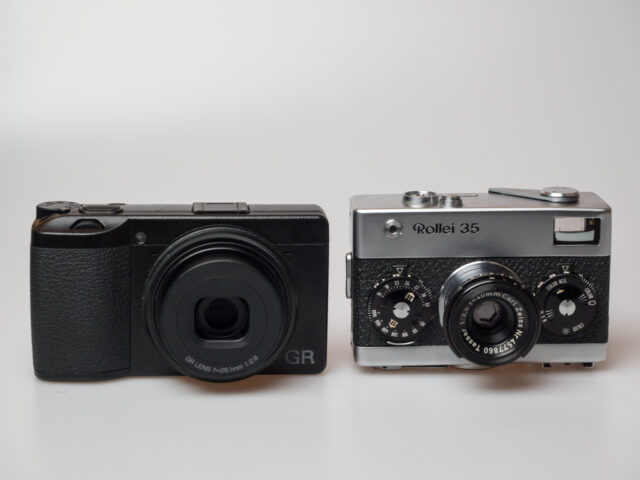
A lens between standard and wide, a decidedly compact body, and stunning image quality for the camera’s smallness: The two cameras, Rollei 35 and Ricoh GR IIIx, have more in common than it appears. Let me take you on a journey to the 40-millimetre perspective.
It’s just a piece of material, for sure. But I think anyone of us has a camera, a lens, a bag or some other part of our gear that has an exceptionally high emotional value. For example, I very much like the Rollei 35 my mother got from my late father back in 1970 for her graduation. After a clean, lubricate, and adjust (CLA) job, it performs very well again, but my mother takes no more photos. So, she passed the Rollei on to me as the only remaining film photographer in the family.
Rollei 35 and Ricoh GR IIIx as travel companions to Italy
When the two of us made a memorable journey to Italy recently, I thought taking her little camera with me was a good idea. For nostalgic and other reasons, but more about that later. But I wanted to add something to the analogue experience. And, to be honest, was a bit afraid of relying on just four rolls of Kodak Tri-X. And as the 40-millimetre focal length of the Rollei is an attractive compromise between 35 and 50, I extended my kit to include a Ricoh GRIIIx. This one sports a 26.1-millimetre lens for its APS-C sensor, allowing for a circa 57 degrees angle of view (diagonally) and thus a perspective similar to the Rollei’s.
Small size means compromise – for both Rollei 35 and Ricoh GR IIIx
In this article, I will talk a bit about the two cameras from the user’s perspective and share a few photos. For in-depth reviews, I can (although I do not always fully agree) recommend Hamish Gill on 35mmc, David Aurdeen on japancamerahunter, and Dmitiri on analog.cafe for the Rollei 35 – and Amateur Photographer, DPReview, and PetaPixel for the Ricoh. There is one aspect the Rollei 35 and Ricoh GR IIIx have in common, and I have not read about this anywhere else so far. That is: Both cameras are the result of a number of compromises in order to keep them small – which is their main advantage for sure, and this smallness remained an attractive proposition over the timespan of more than 50 years.
In some ways, the Rollei 35 and Ricoh GR IIIx are surprisingly similar
In this respect, there are astonishing parallels between the 1966 Rollei 35 and the 2021 Ricoh GRIIIx. On the Rollei, the engineers made economies in the viewfinder design in order to save space. There is no rangefinder included and no parallax compensation, making the frame lines more of a hint than a piece of precise information for framing. The Ricoh comes with no viewfinder at all, you have to get by with the rear display. At least, this one is very bright and contrasty. Alternatively, you can add an expensive optical viewfinder which, however, destroys the camera’s pocket credentials.
Another parallel is the moderate speed of the fixed lenses of both cameras (f/3.5 in the Rollei with the German-made Carl Zeiss Tessar, f/2.8 in later models with a Rollei-made Sonnar from Singapore – f/2.8 in the Ricoh). A third aspect the Rollei 35 and Ricoh GR IIIx have in common is a somewhat fiddly handling experience. In both cases, the miniature control elements are to blame. And finally, the two cameras have in common that they represent opportunities that Leica failed to grasp.
Rollei 35 and Ricoh GR IIIx: First, let’s look at some Rollei history
The Rollei 35 was invented by Heinz Waaske, who at the time worked for the camera manufacturer Wirgin at Wiesbaden. In 1962, he realised two things very clearly. Firstly, the SLR cameras common at the time were way too big and too heavy for many users, especially amateurs and the growing number of travellers. And secondly, a smaller film format, such as 16 millimetres or half the 35mm frame, entailed too many limitations in image quality. So, the task was to develop the smallest possible camera for the full 35mm format.
The Rollei 35 has a quite unusual design
Waaske set to work on the design, adopting an unorthodox approach. He used a retractable lens to make the camera pocketable. To do this, he developed a two-part shutter. It is housed partly in the lens itself and partly in the camera body. He also decided on a film transport in the reverse direction. Seen from the back, the cartridge is on the right and not on the left as usual, and he moved the flash shoe to the bottom of the camera. All this was unprecedented.
Allegedly, Leica and Kodak both declined
But Wirgin showed no interest because the company wanted to get out of the camera market anyway. As the story goes, Waaske presented his invention to Kodak and Leitz, but they also declined. Finally, Waaske signed on with Rollei in Braunschweig, which was a major player in the industry at the time. At Rollei, they quickly recognised the potential of this unusually small camera for the comparatively large film format. Rollei presented the new camera at Photokina 1966, and the interest was enormous.
A small camera put together from high-quality parts
So, what makes the Rollei 35 so special? It is made up of very good components, starting with a Zeiss Tessar 40/3.5, a shutter from Compur and a light meter with a cadmium sulfide measuring cell from Gossen. All this was delivered with excellent manufacturing quality and good ergonomics. In addition, the camera’s design is a masterpiece of 1960s industrial design that is still impressive today. All this combined to ensure worldwide success for a camera which is not much bigger than a packet of cigarettes.
From Braunschweig to Singapore and extension of the line-up
After a few years, the production of the Rollei 35 was moved to Singapore. And the lenses were no longer made by Zeiss but under licence by Rollei itself. A more expensive version with a multi-coated Sonnar 40/2.8 (half an f-stop faster) was added. In addition, Rollei produced cheaper versions. In the end, around two million Rollei 35s left the factories. Many of them are still in use or slumbering in drawers. There are many second-hand models available, and repairs are still possible.
You will hardly ever need a manual for the Rollei 35
In practical use, the Rollei 35 is uncomplicated. Exposure time and aperture are set on the two front dials, and a needle pointer on top of the body shows that all is fine. The user has then to guess the distance and set it before taking the camera to the eye. Finally, a look through the viewfinder – the frame lines are more of a guide – and then the mechanical shutter will whirr quietly and without vibration.
Think, set, point and shoot – actually, it’s quite easy
I chose the Tri-X for my current project because I also wanted to shoot indoors; at the same time, I needed the latitude to use a yellow filter outdoors. Filters, by the way, are quite tricky on the Rollei 35. My early “Made in Germany” model has a 24-millimetre filter thread on the Tessar. Later models with Sonnar are designed for the much more common 30.5-millimetre filters. 24 filters are hard to come by; I was able to find only an empty 24 mount and an old 27 Zeiss Ikon filter. With patience and a file, I managed to make it fit. But back to the Tri-X. With its known qualities, I had no stress with exposure metering. When the filter was on, I set the correct values according to external metering and then corrected for two stops of overexposure with aperture and/or time.
Oh yes, the Rollei 35 is fun to use
Overall, I had a great photographic experience – and not just for nostalgia reasons. The Rollei 35 is fun to use and delivers good results. The lens is sharp (if set correctly), and its single coating has proven to be adequate. Indoors, with ISO 400 and a maximum aperture of f/3.5, you quickly reach the limits, although I was lucky with 1/15 second on several occasions. The relatively high weight of the camera (400 grams) contributes to this, as does the low mass of the moving parts at shutter release.
What if… Leica had bought the project that was to become the Rollei 35?
What remains is the question of what would have happened if Leitz had adopted Heinz Waaske’s design. Of course, this is all purely speculative, but that’s how it could have gone: The CL and perhaps also the cooperation with Minolta would not have come about in this form. Leica might also have set up its own production in the Far East. Leica would have found a wider distribution. Would have, could have, might have – it’s idle talk. But one thing is certain: Many people who enjoy taking pictures with an analogue Leica today will also be fascinated by the Rollei 35.
Rollei 35 and Ricoh GR IIIx: Now, let’s turn to Ricoh
Of course, the Ricoh GR IIIx is not as deeply rooted in (personal and photographic) history as the Rollei 35. But the story of this brand goes back as far as the 1930s, after all. It includes, among other things, major innovations in office communications technology. In 2011, Ricoh took over the traditional Pentax brand. Since then, it has consolidated its reputation in the photographic market as a dedicated niche manufacturer that places great emphasis on image quality.
From 1996, GR stood for great little cameras
Since analogue times, the GR series has stood for high image quality thanks to the use of a fixed focal length. The analogue models with their 28 mm lenses are still beloved by many users today. No wonder, since they play in the league of Contax T2, Leica Minilux and Co. After a series of “GR Digital” models with relatively small sensors, Ricoh introduced the model known only as the GR in 2013. It was the first one to accommodate a full APS-C sensor in a super compact body. At the same time, it continued the tradition of the 28 mm angle of view.
There was even a Ricoh camera with an M mount
Among Ricoh’s activities, the GXR system was a special case where the sensor and lens could be interchanged as a single unit. Ricoh also offered a unit with an M bayonet and APS-C sensor in this system. But that would actually be a subject for my ongoing M Files project. If any reader can help out with a loan, please feel free to get in touch. If you like, via the comments or via blog host Mike Evans.
Finally, a camera that is really, really pocketable
In the meantime, the digital APS-C GR is available in generation III. Ricoh offers it as a normal version with the 28 mm equivalent, as well as the GR IIIx model with the aforementioned angle of view of a 40 mm lens. Since I am well provided for with the Q in the 28 focal length, I decided on the GR IIIx. My first impression was: Wow, this camera is really small. The GR III is hardly bigger than a Sony RX100, which, however, only has a 1-inch sensor (but a zoom lens and a miniature electronic viewfinder, to be fair). The little Ricoh is indeed a pocket camera for me. I quickly wondered whether I should have taken just such a device with me for mountaineering and the like much earlier.
40 millimetres: not too theatrical, not too austere
In my eyes, the 40-millimetre focal length has the advantage that you can also do a bit of portraiture and similar rather concentrated subjects. Nevertheless, it still offers a good angle of view for landscape and architecture that is neither too theatrical nor too austere for my taste. With the 28, on the other hand, you have to work carefully. Better to use the wide angle in a smart way. Otherwise, you only get pictures with a lot of stuff on them that leave the viewer confused.
Ricoh’s DNG files are honest – and that’s why they are so good
In practical use, the little Ricoh more than met my expectations. The optics and IBIS are great, and the DNG (!) files allow (and require) quite some editing. I want to put it down to the fact that the camera post-processes the files comparatively little. This may initially disappoint JPG users, but it suits my way of working very well. Of course, the possibilities for focusing your subject in front of a blurred background are limited. This is where you notice the real focal length of 26 millimetres and the f/2.8 aperture.
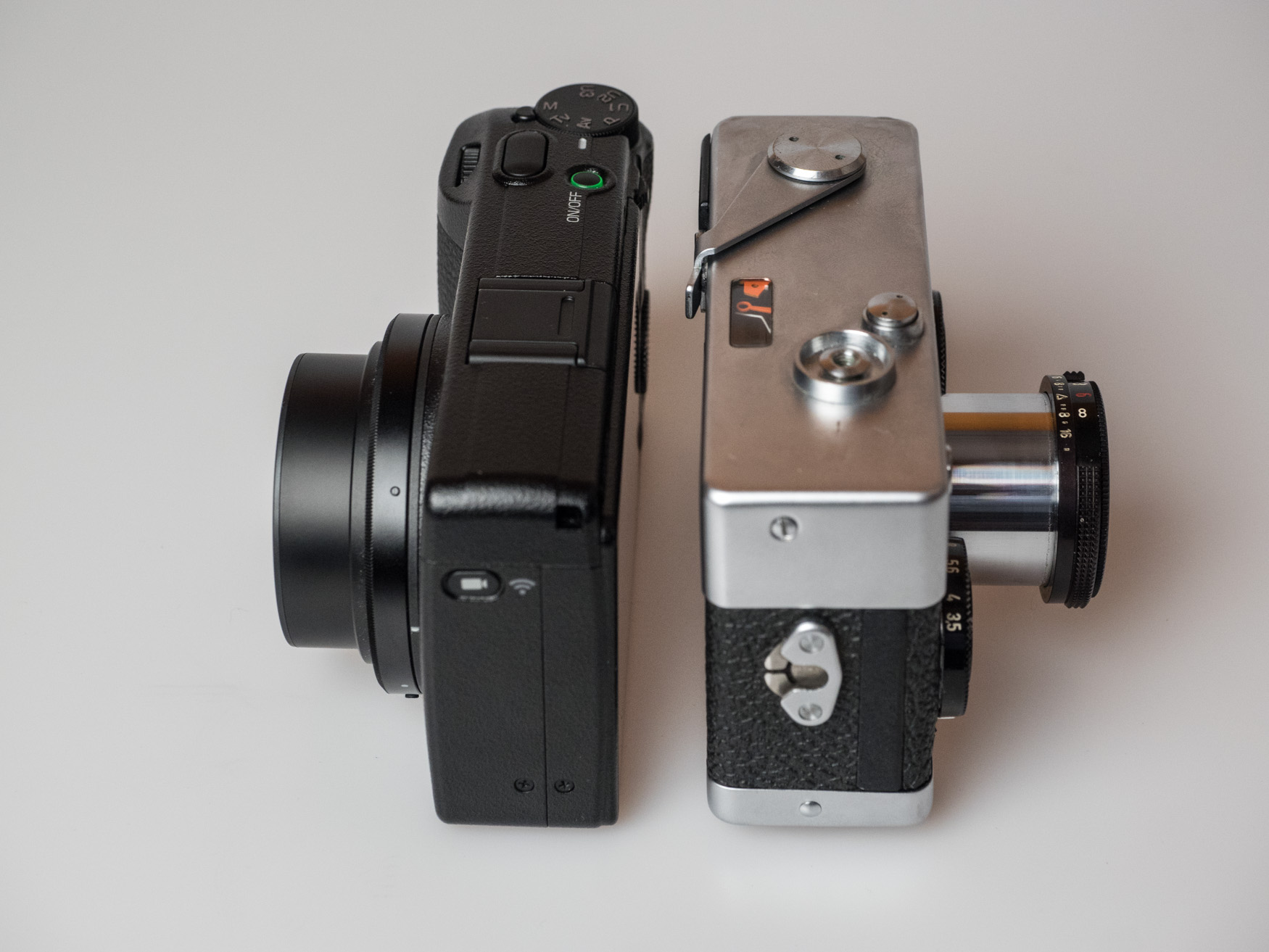
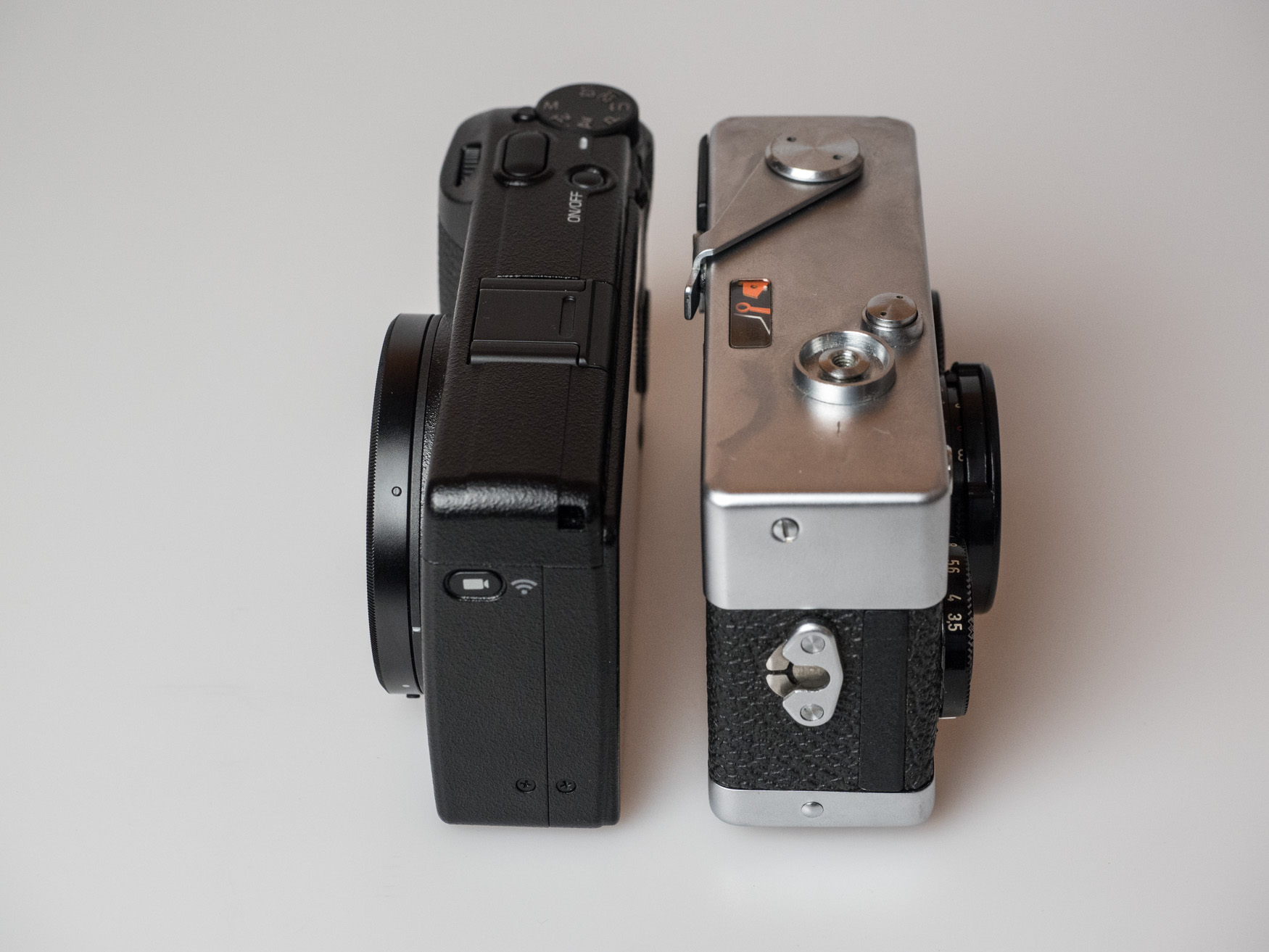
There is no room for a viewfinder for sure, but I miss it all the same
There are no scene modes. The basic settings in the clearly laid out menu are quickly made. When it comes to autofocus (contrast and phase AF!) I’m stuck with the single-field option with touch selection. At least there is one advantage of taking photos via the display. The macro mode, which is great in itself (here, the focal length seems to extend to that of a 50 mm lens), would be much more usable with an electronic viewer. After all, I can’t hold the camera as steadily on the long arm as I would have to with a thin depth of field. But well, you know all that when you opt for such a camera.
Some very nice features…
You can read many more details about the Ricoh GR IIIx in the relevant reviews. From the user’s point of view, I would like to mention the possibility of charging via USB-C. You will take advantage of this quite often. The battery is tiny for the performance that the sensor, image processor and optical stabilisation have to deliver. At least for travelling, fuelling up the battery inside the camera is a great option.
You have a charger for your mobile phone with you anyway. Surprisingly, the GR IIIx uses the same battery type as my old Olympus TG2 waterproof camera (which I still use when kayaking). The Olympus designation is Li-90B, and under this name, you will find many third-party replacement batteries and external chargers. Also good is the built-in 2 GB memory, which the camera activates when no SD card is present. It’s not as elegant or as extensive as the internal storage of the M11, but it’s a good feature.
One more thing that many users will like (and that draws another parallel to the Rollei) is the way you can use zone focus with the Ricoh GR IIIx. With the Rollei, you would always guess the distance and set the lens to it. The Ricoh offers fixed focus at set distances (Snap Focus, they call it): 1m, 1.5m, 2m, 2.5m, 5m and infinity. You can even assign this function to a button to have fast access. Not exactly the way I am shooting but definitely well thought out!
… and some things I did not like that much
I don’t like a few things: I would have preferred the front dial to be a bit bigger, and despite the lock knob, the mode dial occasionally shifted on me. Other controls are also very small. The app, with which you can transfer pictures to a mobile device and control the camera remotely, is okay, but nothing more. I can’t say anything about the video function.
Rollei 35 and Ricoh GR IIIx both are “klein aber oho” cameras, small but mighty
All in all, the GR IIIx is a great camera that, just like the Rollei 35, fits the description “klein, aber oho” in German. That is, “small but mighty”. It also makes me wonder what would have happened if Leica had continued its APS-C efforts with such a product. In many ways, the seemingly unglamorous GR IIIx would be (and is) a capable successor to the fixed focal length Leica X models. I know quite a few Leica users who also use a Ricoh GR. And that’s also because the two simply go well together.
Rollei 35 and Ricoh GR IIIx – just two out of many 40-millimetre options
Concluding, I have to say that the 40mm perspective grew on me. How good that there are many other options. Apart from the many, many zooms that incorporate 40mm, some other vintage solutions come to mind. The Leica Minilux and its successor, the CM, had a 40/2.4 Summarit that has an almost legendary reputation. The film CL came with the 40 Summicron. Minolta later improved both the camera and lens.
The CLE was a far more modern, electronically controlled camera, and the M-Rokkor 40/2 got a better coating. Today, 40-millimetre lenses are available new for M Mount from Voigtländer. For L-Mount, Sigma has 40/1.4, and other brands also offer a 40 for their current systems. And finally, Rollei made an attempt on the rangefinder market with a Rollei 35 RF. This one came again with a 40-millimetre Sonnar – you will find details on this in part 4 of The M Files.
Rollei 35 and Ricoh GR IIIx: one modern classic of today and one of tomorrow
So, forty forever? The Rollei 35 is a forever young camera for sure, and the Ricoh has the potential to become a modern classic as well (so long as digital rot doesn’t intrude). I will continue to use my 40mm fixed lens cameras, but one thing I learned on my nostalgic trip with the good old Rollei is that I also like the wider perspectives of a real wide-angle lens. And the concentration that a 75 or a 90-millimetre lens forces on me. Forty with (growing) pleasure then, but not forever as my only option.
What do you think about the 40-millimetre perspective — a great compromise or neither fish nor fowl? And what is your view on the Rollei 35? Ever owned and loved one or never liked it? The same for a Ricoh GR — versatile or restricted, tool or toy? Has anyone ever used the Rollei 35 and Ricoh GR IIIx side by side and wants to add their experience? Let’s discuss this here in the comments section!
Want to contribute an article to Macfilos? It’s easy. Just click the “Write for Us” button. We’ll help with the writing and guide you through the process.

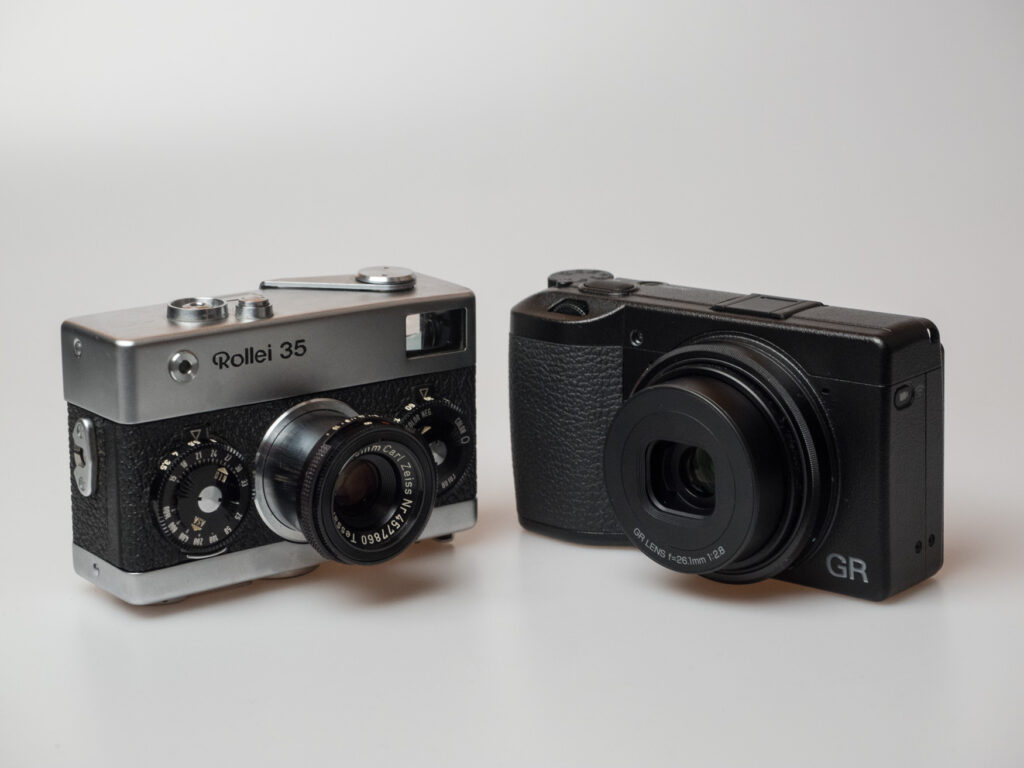


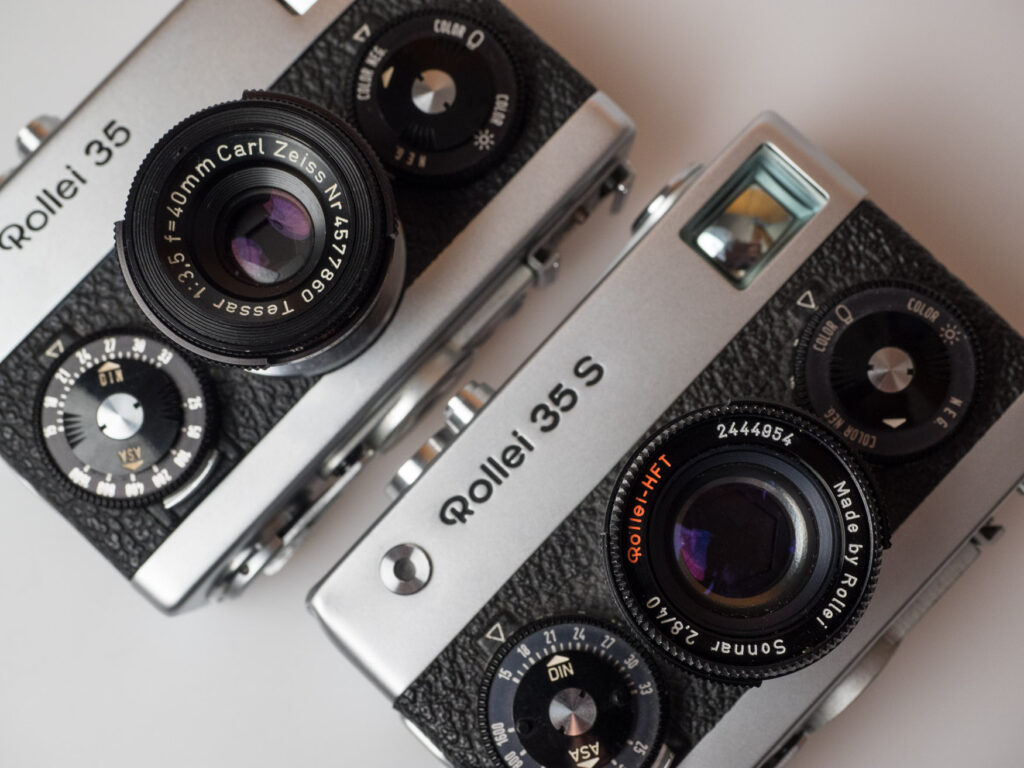

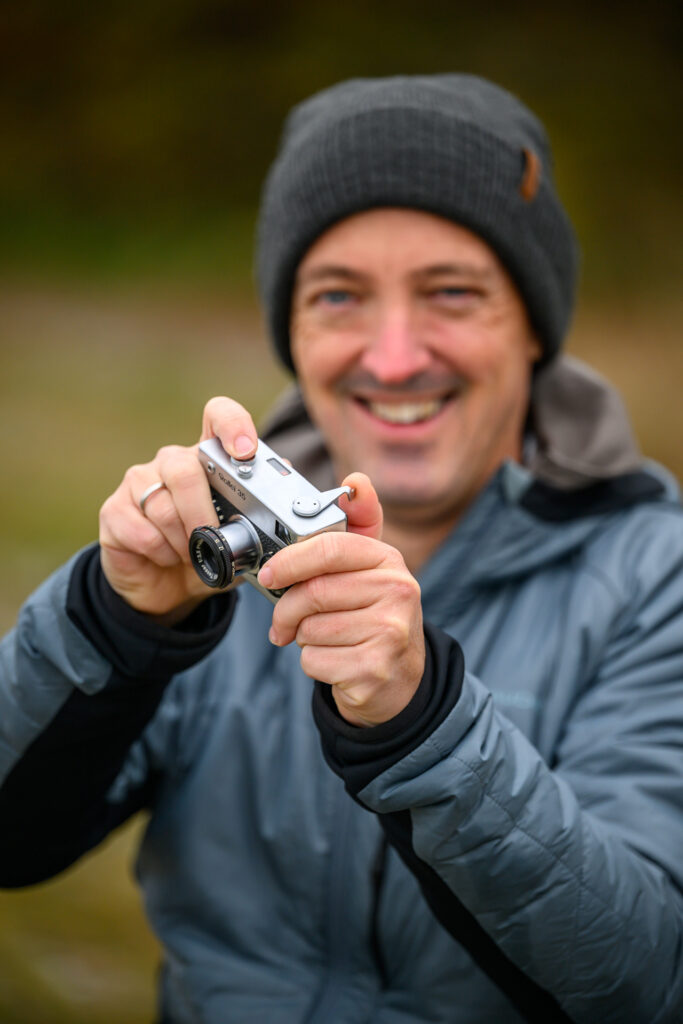

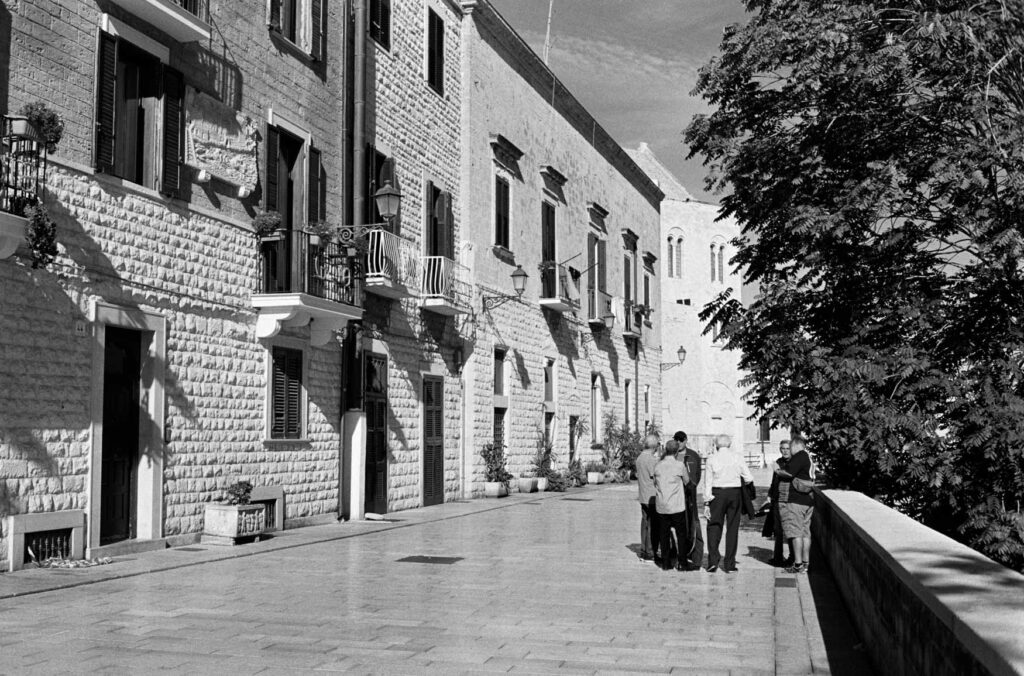

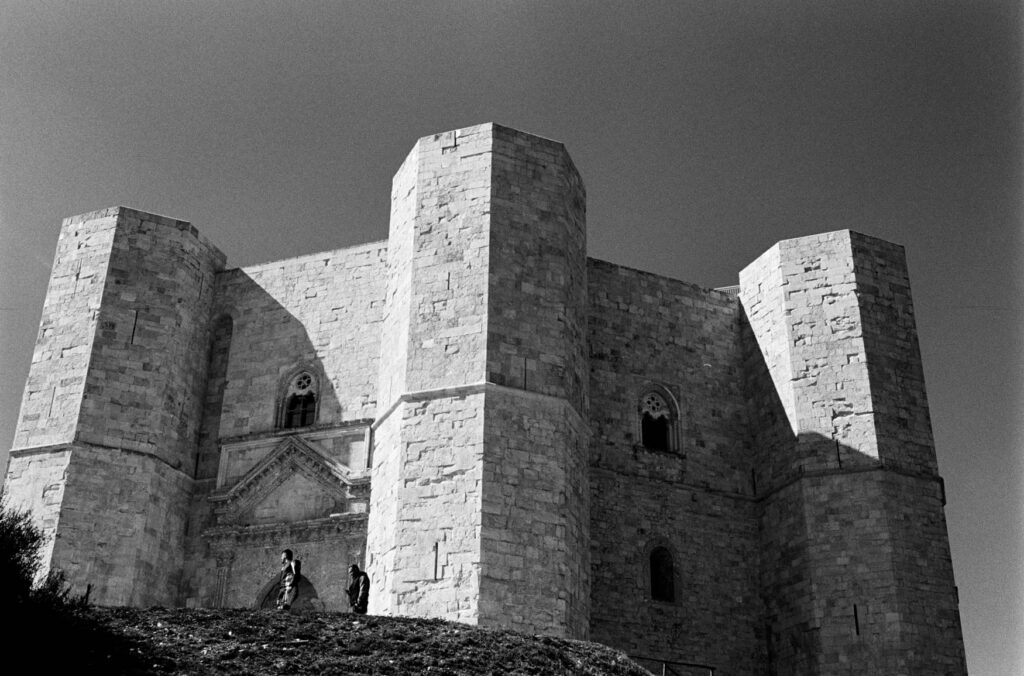
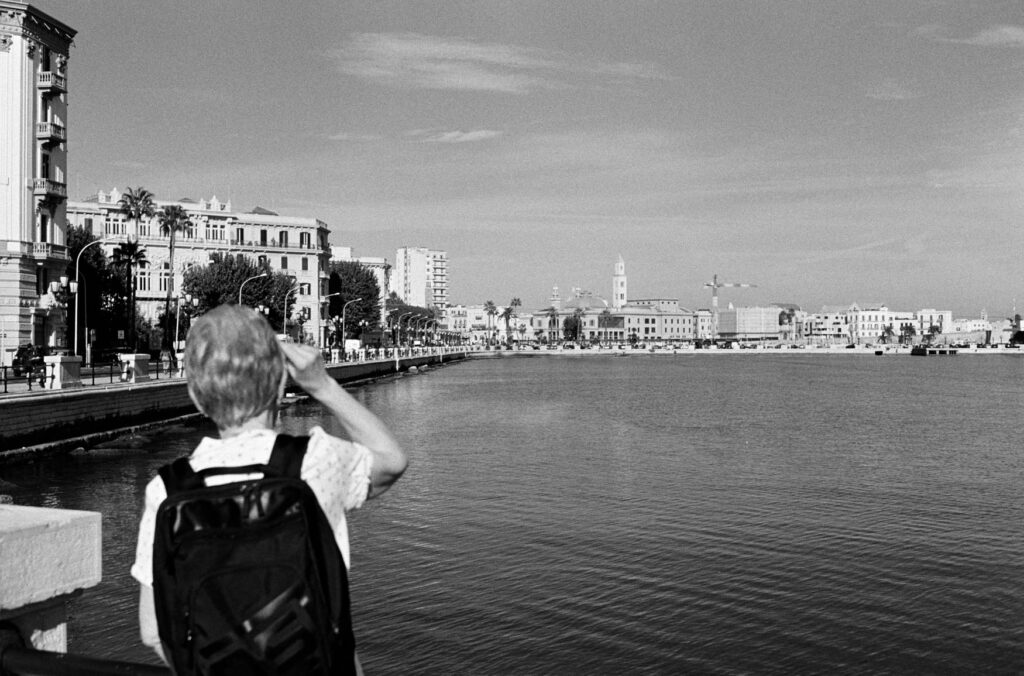



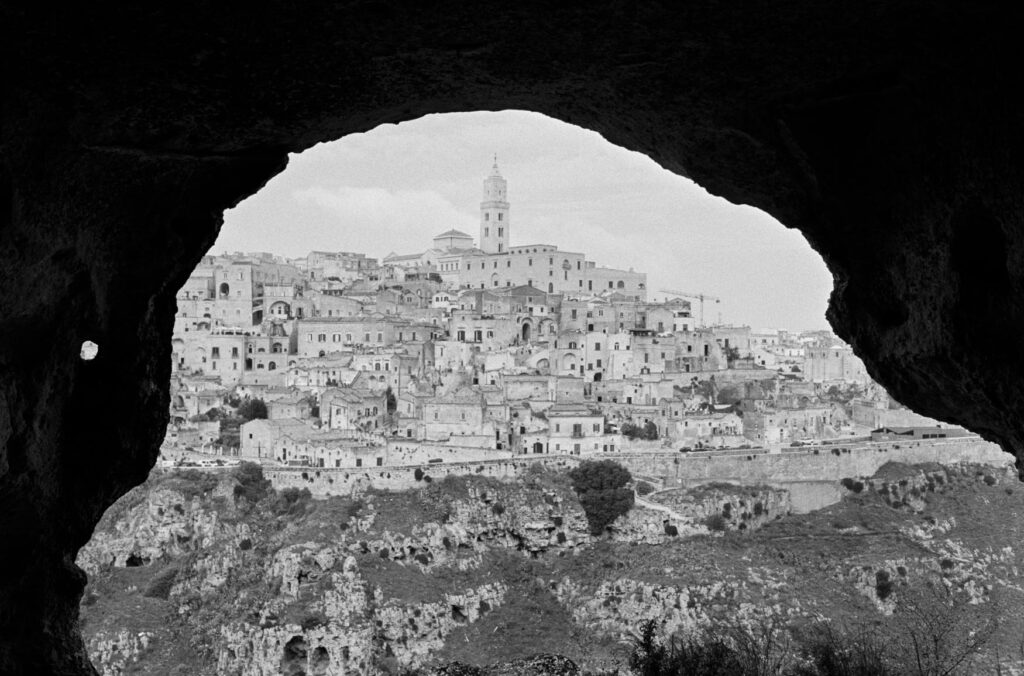
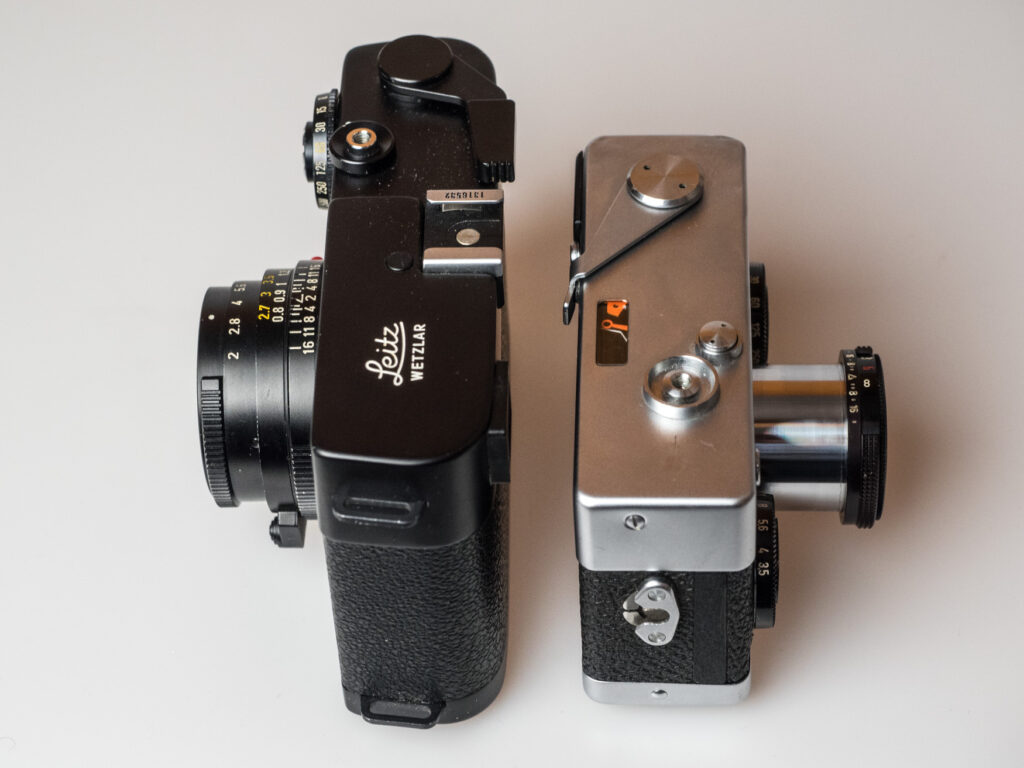

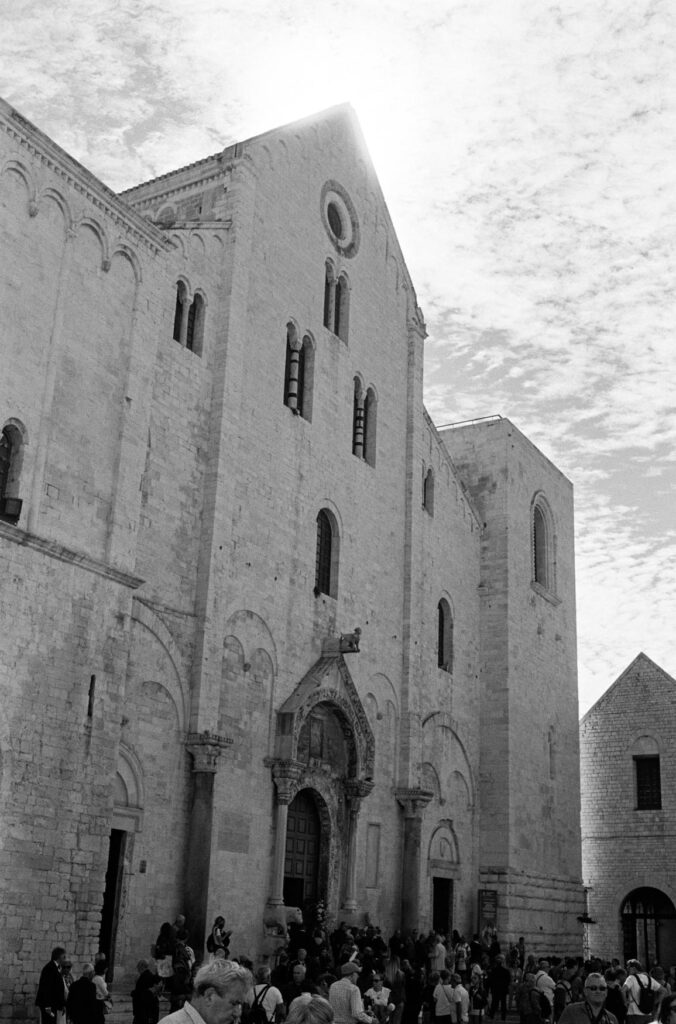

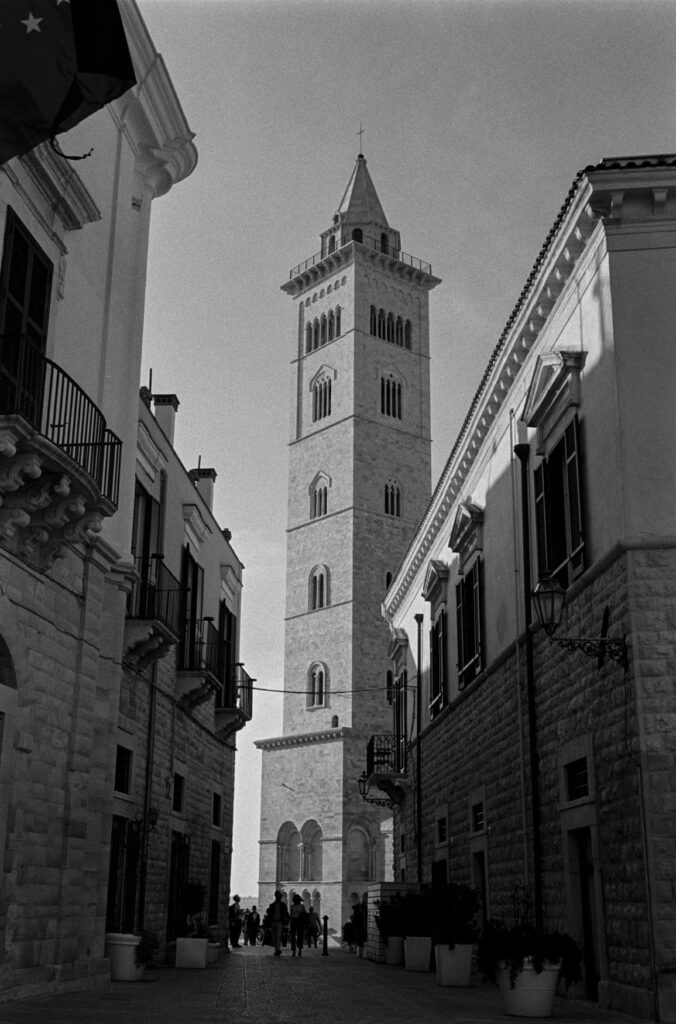








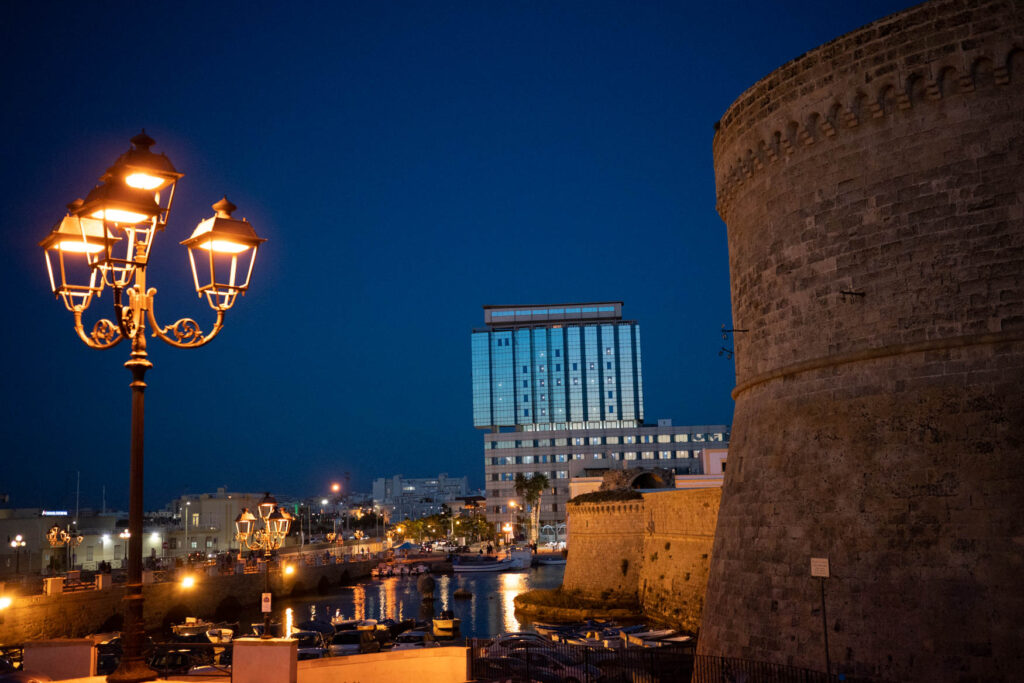

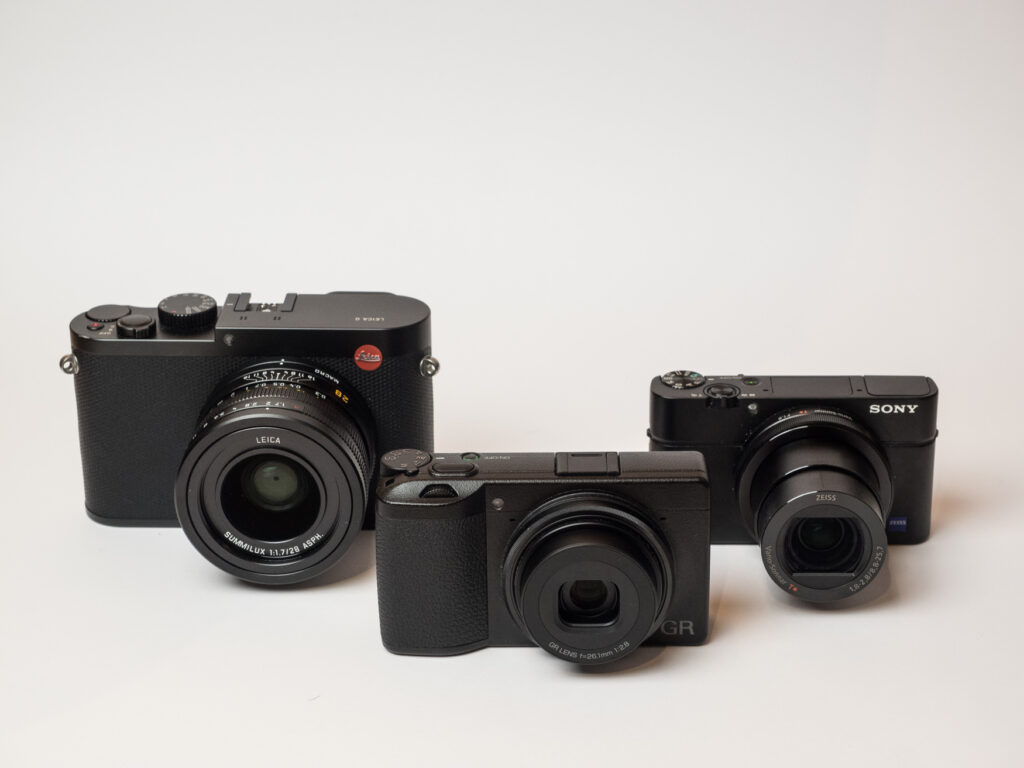

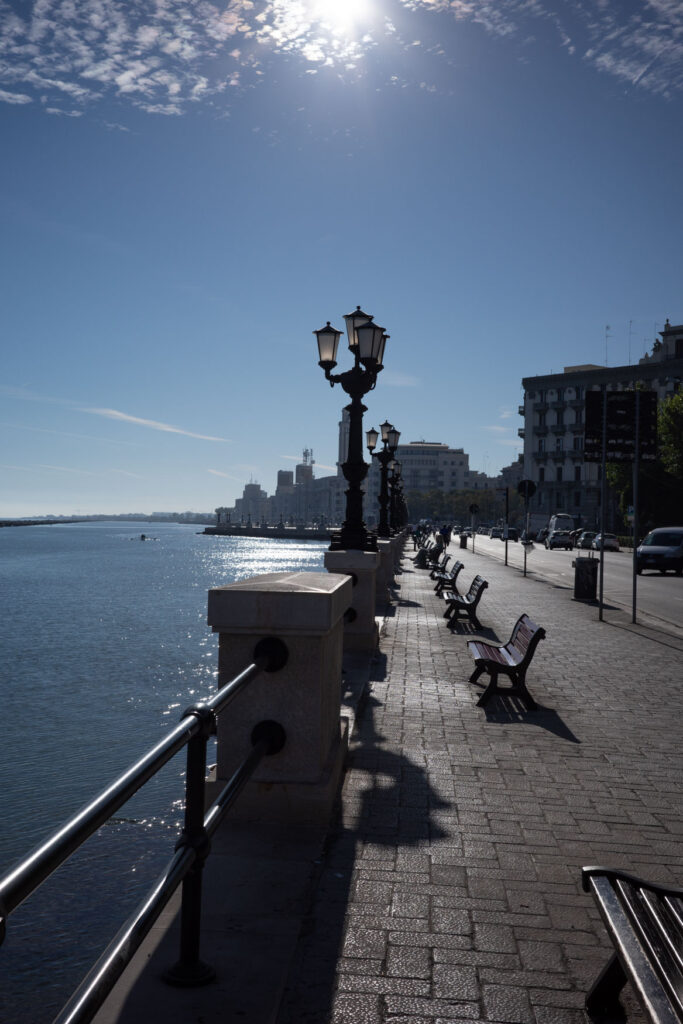




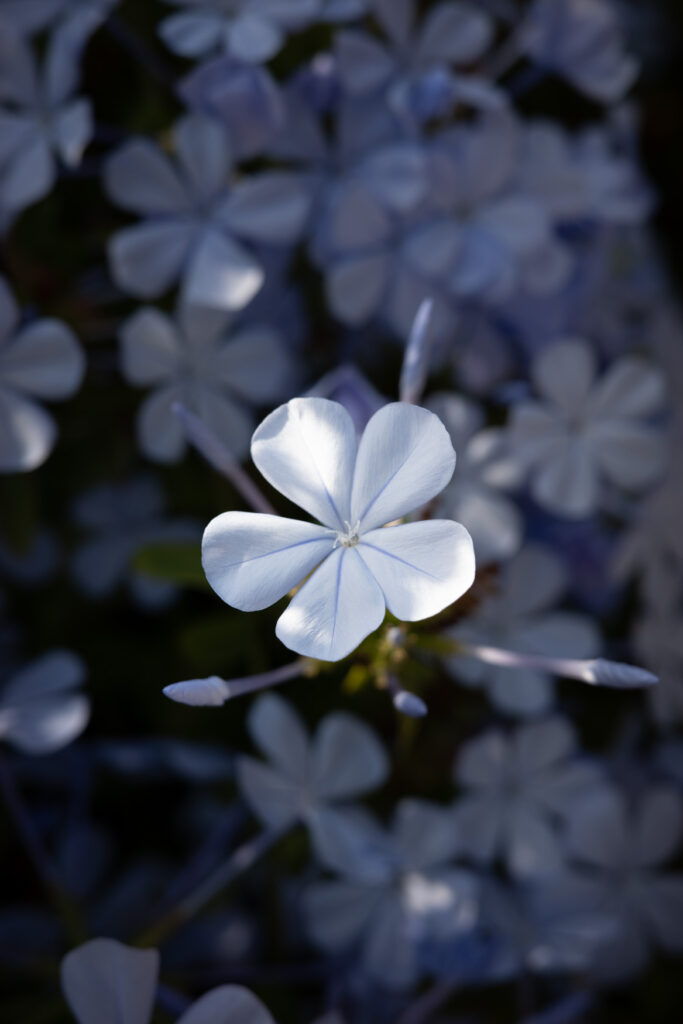
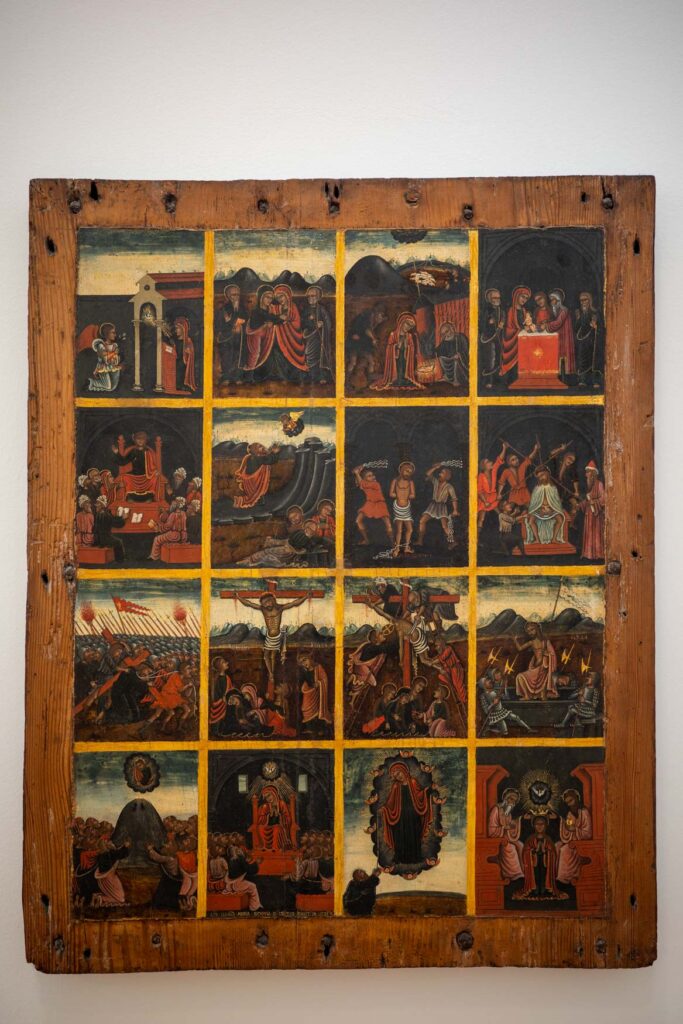
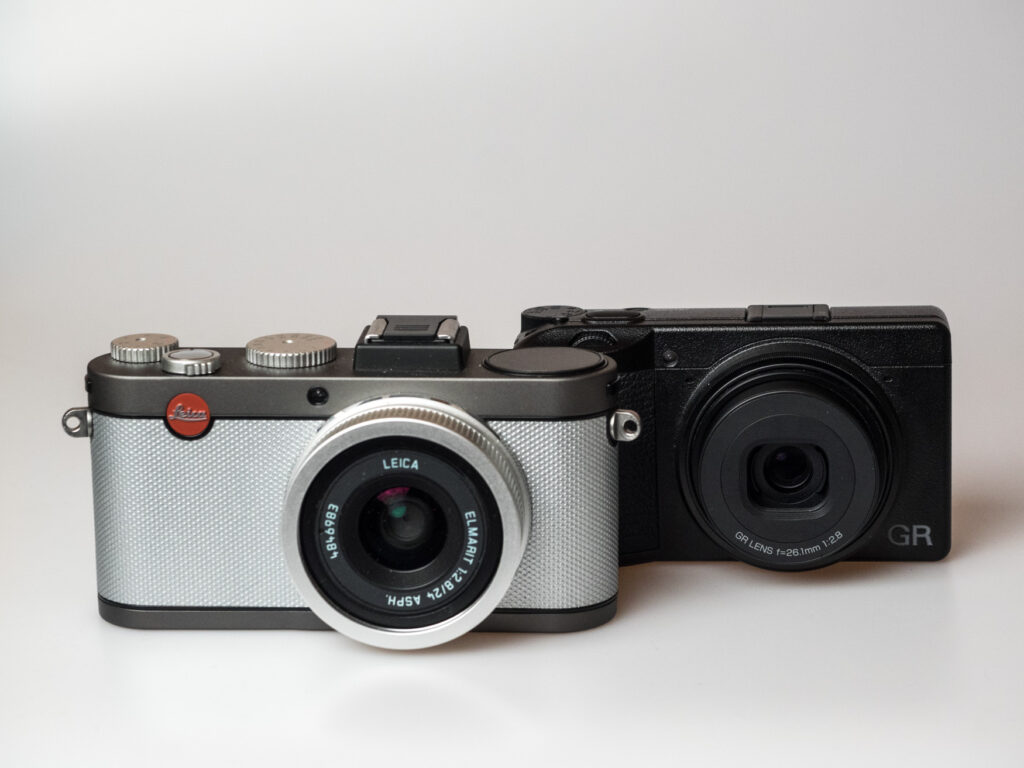





Great reading. Love the Rollei 35 series an used one for decades climbing. Moved to the GRs which I loved but hankered for 40mm. Had a GRD first gen…so so.Then Panasonic M4/3 GF with 40mm but always wanted the larger sensor. Settled on a Fujifilm XA-1 with their pancake 27mm (40mm eqv) 2.8. Blinding little setup. Really is. Fits in a pocket has the lovely Bayer sensor (lots of discussion at the time XA vs XM as one was Trans-x other Bayer). Cheap as chips and transportable.
Not as classic style as the Rollei but a very good full 35mm and very pocketable (may have been smaller than my Ricoh GRIII) was the Olympus XA series which I was using in the 80’s. It had its own very good side detachable flash which made it ergonomic.
Quite possible you are right, Martin. It’s complicated, and there is a collectors’ scene where special models are sold at hight prices. It’s possible that early or pre-series 35S cameras were made in Germany. As to the shoe on top, there are the late remakes from the 1990s and later when one of the Rollei successor companies made some small batches of the camera. Some of the came with the S-Apogon HFT which was made by Rollei but maybe licensed by Rodenstock. The Xenar lenses came from Schneider Kreuznach who were a supplier of Rollei for decades. These variant was offered for a short period of time in 1972 and 1973 according to this article: https://de.wikipedia.org/wiki/Rollei_35. All in all, quite a science…
And two more links (sorry. German only) about the variations of the Rollei 35 between 1963 and the 2000s (!):
Overview: https://de.wikipedia.org/wiki/Rollei_35
Late models: https://olypedia.de/index.php?title=Rollei_35#Weitere_Modelle_der_Rollei_35_nach_1981.2C_Sondermodelle.2C_Prototypen_und_.22Sonstiges.22
Replying to Jorge-Peter Rau: “As far as I know, all Rollei “historic” Rollei 35S cameras with the Sonnar were made in Singapore (a few much later as special editions mainly in the 1990s were made in Braunschweig again.). And all lesser models were only made in Singapore”.
I am pretty sure I have seen 35S that were made in Germany, although I can’t prove it right now. Maybe they were the later special additions.
I see some special editions advertised on ePay for Leica prices. Also some with the hot shoe on TOP! In addition to Tessars and Sonnars, there are Xenars and S-Apogons. I had not known about the last two.
Thank you for a very nice article. It sent me running upstairs to recover my Rollei 35B which I had almost forgotten about. I purchased my 35B on the 6th of May 1972 (I can remember the exact date because my local football team Leeds United won the FA cup!)
At that time the price of the cameras reduced when they transferred production to Singapore. I was lucky though and managed to buy a German made camera at the new price.
I used the camera for many years while travelling and it always gave good results. I tried a Ricoh GR (digital) but found it rather limiting and have replaced it with a Sony RX100 Mk111 which I love.
Best Wishes to everyone from the Yorkshire Dales (England) John
Another 1972 purchase. I got my Rollei 35 with a Rollei electronic flash. Can’t remember much about the flash except it was designed to complement the 35. I think it was E19BC.
We also had such a flash. I found it recently, but it was broken and beyond repair. Most remarkable was the hot shoe on the bottom of the camera (the top plate was to thin and weak to carry a flash). Rollei recommended to hold the camera with attached flash upside down to get a “natural” illumination. By the way, there even was a new attachable light meter that came in a 180 degree reversed design especially for the Rollei 35 (I think it was the discontinued KEKS EM-01R). As broken light meters can occur on Rollei 35 cameras and furthermore 1.35V batteries are no longer available, this Macfilos article about attachable light meters (and also the other two parts of the mini-series) might be of interest.
There are adapters available that use a 1.5V button cell in an adapter that is shaped like a PX13. To solve the voltage difference, instead of alkaline or silver-oxide, use a zinc-air hearing aid cell that is the same size as the 1.5v button cells, but produces 1.35v.
Thanks, Martin. My experiences with both such adapters and zinc-air batteries are not very good so far, but maybe some of our readers have more luck. JP
Thanks, John, and greetings to the Yorkshire Dales. The Sony RX100 series cameras are great for many a purpose. I find them a bit confusing to be honest with all their miniature buttons and extensive menus, but I know a lot of happy users. With its small size, any RX100 is an excellent travel camera for sure, and the images are very good given the small size of the sensor. All in all, a good successor for your Rollei 35 for sure, and I’m glad to read you are happy with it. All the best, JP
The great Don Revie beating “The Arse”! I can remember watching the game at my friends house because they had a better TV. Yorkshire pragmatism!
I couldn’t agree more, Keith, to what you are writing about the community here. A great achievement of our excellent editor, Mike Evans. He has built up and further develops a pretty unique ecosystem. And that’s the reason why I use some of my (litte) spare time to contribute here. I guess you feel the same about your own, wonderful, articles you are sharing to us all. – And as for B&W filters: Yellow is great for TriX which tends to have a rather sharp gradation by design. With an Ilford FP4 for example or one of the Agfa derivates I would rather use the orange filter provided that there is enough light. JP
Hi Joerg-Peter, what a great article! I have never owned either of these cameras, but was fascinated to read your analysis of them. The black and white photos from the Rollei are superb. I just purchased a set of filters for B&W photography and wondered if the yellow might be on the tepid side, but your photos show otherwise. I thought your article was beautifully constructed, engaging, and highly informative. A lesson for all us aspiring photo-essayists! I have also enjoyed reading through the many comments you received. What a well-informed, well-traveled, and erudite community we have reading Macfilos. All the best, Keith
I have an SE that I take out in winter as it fits in a winter coat pocket easily or when I couldn’t be bothered with bigger kit (too often). Primarily for black and white which I think suits it better as you have demonstrated. I bought it from the brilliant Jeremy Rata at his wonderful website https://www.filmfurbish.com. I bought red and yellow filters from him too. I cant recommend him enough and his customer service was fantastic. Des
Thanks for sharing this, Des. Very helpful ceratinly not only for our UK readers. Maybe you want to make Jeremy Rata aware of the article and your honourable mention… JP
Thank you, Jörg-Peter, for writing a truly absorbing article comparing: old and new cameras, digital and film, monochrome and colour. It certainly is a magnum opus.
The Puglia region has a charm all of its own. I had a holiday there based at Fasano 18 years ago, but I didn’t manage to visit the locations you have shown in your excellent photographs. It seems you had a two-centre holiday, one based around Bari and the other around Lecce. Have you been to Ostuni, Alberobello and Locorotondo? These towns are a photographer’s delight.
Chris
Thanks for your feedback, Chris, and nice to see that you noticed the contrasting strategy I used 🙂 As for Puglia – there is much more to see for sure. Maybe you read my Macfilos article about the Voigtländer Apo lenses where I shared some images from an earlier trip to this wonderful part of Italy. To Ostuni and Alberobello I’ve been, Locorotondo is still on the wish list. JP
Thank you for this and other articles. I didn’t know the original Rollei 35 has a smaller filter size. Guess I got lucky stumbled onto 35S and acquired a new yellow filter that is on it all the time. It’s a great camera for multi-day backpacking trips when I don’t want to think about conserving batteries for my Fuji X-100s.
I love the Summicron-c 40mm that I got with the CL. It doubles as my light-weight lens for M9. It brings up 50mm frameline, giving me some room for error in composition.
You’re welcome, Garlo. Interesting choice to use the flim-loading Rollei instead of the FujiX100 on long backpacking trips. In the past, I mainly took an Olympus OM SLR Body with just one lens in such occasions. Today, I think I would opt for the Ricoh and probably look for a small solar charger and/or power bank. But in fact I know quite some people who loved the Rollei for mountaineering. JP
I always had the Rollei 35S on my extreme interest list for years but in the end purchased the lovely Contax T.
Thanks Jörg-Peter for a wonderful article and set of images. I really like the B&W images you have with the Rollei. Just beautiful.
In the past I’ve used the C-Summicron and the Sonnar T* 38mm f2.8 which came with the Contax T2. Today I use the 20 mm asph (40mm eq) of the Panasonic.
I agree with you about the long time spent processing the raw files of the GRs aps-c series. The GXR and GRD4 raw files are much easier and faster to work with. I tend to prefer the images I get with the old GXR or GRD4 which are more organic and film like.
Thanks again
Jean
Of course I had to think of you many times, Jean. Yes, the DNG files from the GR IIIx are a bit demanding, but they leave you so much options, so I willingly invest a bit of time in them (a few presets can help). JP
Thanks. It used standard 35mm film, folded ingeniously, using only part of a frame.
An interesting read. Thank you, JP.
I bought my Rollei 35, the original, in1967, and still have it. I liked all the features you described. I also have the original GR digital, somewhere safe, but not readily accessible. At the time, I was commuting into London and the little Rollei was ideal. I did get a bit frustrated guessing distances in the closer ranges, and missed my M3’s rangefinder.
The idiosyncratic design of the Rollei reminded me of my experiences with a borrowed Tessina. That was tiny, Swiss made, but with a smaller film gate. Possibly half-frame? The quality of design and engineering exemplified Europe at its best. Simply superb!
Wow, I’d forgotten about that one. Toyed with the idea of buying one in the 1970s.
Not only were they tiny. but motor-driven! A wind-up clockwork mechanism.
The image size is reported at 14x21mm, considerably smaller than half-frame.
I owned (and sometimes used…) a Tessina long, long ago. A remarkable camera, but very cludgy for practical use. The film had to be loaded (by the owner) in special cassettes , where it was quite hard wound, and curled hopelessly as a result. Also, since there was a mirror in the optical path, all images had to be copied with the film in the “wrong” way. That clockwork motor was very loud, and there was no way to disable it, so the whole idea of a discrete miniature camera was forfeited. But, speaking of Rolleis, the Tessina was also a twin lens reflex! The film gate was 14×21 mm, so smaller than half frame.
Hi David, don’t let your beautiful Rollei sleep in the drawer. It deserves to be used, and even more so if it is such a nice early model. I took to this camera quite quickly, and I learned to live without the rangefinder. To this belonged to accept that the one or the other image was not tack sharp. – The Tessina is very interesting, other than the Rollei 35 a widely forgotten jewel of European camera manufacturing. Is there any Macfilos reader who owns AND USES a Tessina? JP
What a superbly intersting article! Fascinating subject and marvellous photos. I shall want to re-read it before finally coming to a decision whether to buy the GRIIIX or a second-hand XE. Oh these choices!
Hi John, I hope my article was more helpful than confusing. The GR IIIx is a far more modern camera with 24 MP, in-body stabilization and some very cool features such as snap focus. Add to this the limited repair faculties, and your head will tell you to go for this one. But I would fully understand if your heart told you: Take the Leica…
Wonderful article with all the photos and detailed information. It’s invaluable to anyone who favors small cameras!
Thanks, Steve, for your kind feedback. Such articles cause quite some work and even more so if you don’t write in your mother tongue. But I can also say: It’s my pleasure, both in the literal and figurative sense. And the best about sharing such thoughts are the great discussions here in the Macfilos community…
Thanks for this very nice article. My first camera was a Ricoh 500G with a 40mm lens, and something about the focal length clicked with me as a teenager starter in photography. I’ve used other lengths down the years but 70% of my pictures have been with 40mm or equivalent. I had a Rollei 35S and have often wished for a digital equivalent. The Epson RD1 with a Leitz 28mm attached was great but large and heavy. I use the Sigma Merrill DP2 (45mm-eq. lens) and that is superb, but still not Rollei-sized. Maybe the GRIIIx is the new Rollei 35…I just wish it had a built-in OVF or EVF.
The 40mm lens is a great all-rounder. In vertical format it can give a wide perspective. With a wide aperture and the right distance, you can get a mild tele effect. And best of all it offers a natural and undistracting view of your subject.
“I had a Rollei 35S and have often wished for a digital equivalent.”
The Nikon 1 J5 body is almost exactly the same dimensions. The lens adds about the same projection as the Rollie lens when extended to taking position.
Ian, I am a great fan of the Ricoh GR — although, in my case, it is the 28mm GRIII. The lack of a viewfinder is indeed the one major negative factor, but I don’t need to say that a built-in viewfinder would result in a larger body that would lose the pocket-cred of the GR. Another fixed-lens APS-C camera, the Fuji X100, offers a great viewfinder in a larger, far less pocketable form. So it’s a matter of choice. The small accessory OVF is of limited use as far as I am concerned.
But one of the greatest features of the GR, which JP mentions in his article, is the SnapFocus facility which turns this little camera into a perfect medium for zone-focus street photography. With SnapFocus on/off set on the Fn button, it is wonderfully easy to swap between zone focus and autofocus. And the on-screen depth-of-field scale is well executed and can be relied on. All in all, for casual photography the GR is a great (and very discreet) little camera which I can thoroughly recommend. I think of mine as a pocket version of the Leica Q2.
Mike
“Another fixed-lens APS-C camera, the Fuji X100, offers a great viewfinder in a larger, far less pocketable form.”
I love the Fuji X70, which is a lot smaller than the X100 series, but still has the APS-C sensor of the X100S. It also offers an accessory viewfinder, which I find both useful and cool-looking.
Still bigger than the Rollie, though.
Sorry, I keep misspelling Rollei.
It’s a pity that Fuji did not futher develop the X70. I once almost bought one and now I regret that I didn’t.
Why would a viewfinder make the body larger Mike? They could fit one of a similar type to the one in the film GR series without having an EVF one. It’s tiny. To compose the scene you don’t need a digital finder. The one on my film GR1Vs works beautifully.
I’d certainly buy a digital Ricoh with an optical finder.
The main reason is that the screen takes up too much of the space on the back of the camera. But I was thinking of an EVG and haven’t thought of an optical. Maybe it is possible.
Thanks, Ian, for your feedback. Glad to read that there are more 40mm lovers. As dealers are telling me, the Ricoh GR IIIx sells well which is good news in a market under stress. This will encourage Ricoh to continue their unconventional approach. And maybe they manage to fit in a viewfinder – I can understand your wish so well, and would very much appreciate such an improvement.
Just a quick follow-up. I did notice images I got from the 40mm Tessar were not as sharp as what I got from my Nikkors. The Sonnar was supposed to be better.
One of the features I liked the most about the Rollie, after the tiny size, was the extremely quiet shutter. Just a barely audible click, especially compared the the Nikkormat with its mirror and FP shutter.
I purchased a Rollei 35 in 1972, at the tender age of 24. I was sorely disappointed when it arrived with “Made in Singapore” engraved on the back. I had not known Rollei was making them there.
Rollie made the regular 35, and the 35S, in both Singapore and Germany. The lesser models (B35,C35) may have all been made in Singapore, don’t know. There has always been a perceived quality difference, and a real one, too, with my very limited sample size.
My example got used a lot in the early years, but developed several problems; I think the meter went out as well as the viewfinder becoming cloudy. I followed used prices for years, thinking I would buy a German-made 35S, but never did. Eventually sold the Singapore version I had for parts, many years ago.
For me at this time the Nikon 1 cameras serve the same function, but with the advantage of lens selection. As a pocket camera, the J5 with the 10-30mm PD lens is about perfect. Gives 27-81mm equivalent.
As to the 40mm focal length, I kind of liked it. Contemporaneously with the Rollei 35, I was using a Nikkormat FTn, with a 24mm and a 55mm lens. So the 40mm seemed like a good in-between focal length.
That’s interesting, Martin!
In 1972, I was the subject for quite some Rollei 35 photographers in my family as a cute baby 🙂 As far as I know, all Rollei “historic” Rollei 35S cameras with the Sonnar were made in Singapore (a few much later as special editions mainly in the 1990s were made in Braunschweig again.). And all lesser models were only made in Singapore. If you want to return the fanclub, it’s not too late – there are still many used Rollei 35 cameras around, and some are quite affordable.
And thanks for drawing a line to the Nikon 1; very interesting! I never thought of this, and of course the big difference is that the Nikon 1 gains its smallness by the use of a small sensor. The great thing about the Rollei 35 is that it is full frame after all.
Greetings, JP
Yes, the Rollei was remarkable for its tiny form factor around the 24x36mm frame.
I dismissed the Nikon 1s when first announced, exactly because of the small sensor. I am late to adopt them; just last year, in fact. I suggest looking at Thomas Stirr’s website; he really shows what the little Nikon 1s can do.
Hello JP. I confess this was an enthralling read. Particularly so since I own one of the cameras; the Ricoh GRIIIX. I do also own the GRIII which for me perhaps because of the focal length is used most of the time. Any camera these days seem to butt against comparisons. Perhaps we face a sheer variety of choice these days. The Ricoh is often unfairly compared to other digital cameras seeing that in a way it does have a shared thematic sensibility with a Leica rangefinder. Both made to just take pictures and eschew anything else that might get in the way. Perhaps I might not be making sense. But it seems what the Ricoh was built in moons for it does very well. An unobtrusive and highly capable camera for street photography and may I say decisive moments. Isn’t that similar to a rangefinder ? This comment went on longer than it was meant to be. An engrossing read which I will be sure to read again during a morning coffee. Thank you JP. Best regards.
Glad you liked it, Gireesh, and thanks for your kind feedback.
I must confess that I was wondering more than once if the GR III with its 28 (equiv.) lens would fit me better. The 40mm angle of view is certainly more demanding in some respect but also more versatile for the kind of photos I ususally take. But with either lens, the GR is a fantastic camera that is often underrated. But Ricoh will stick to the conecept, a Pentax/Ricoh sales rep told me only a few days ago (by the way, the also believe in a niche for SLR cameras and will continue to make them an be it as the last man standing). I can only encourage everone to leave the well-trodden paths when it comes to gear for a personal experience. The Ricoh/Rollei project even fostered my conviction that less can be more.
All the best, JP